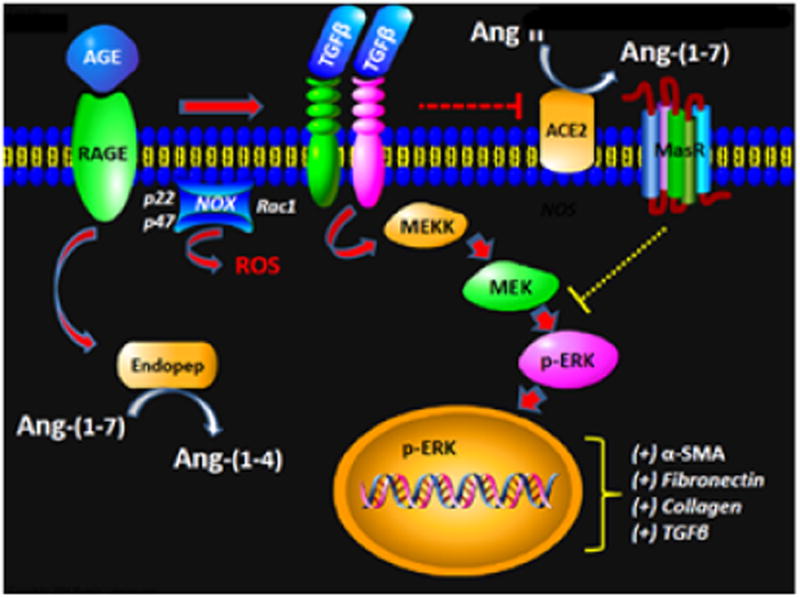Figure 1.

Potential scheme depicting the influence of Angiotensin-(1-7) on the AGE-TGF-β signaling pathway: Advanced glycation end products (AGE) binds to the receptor for AGE (RAGE) and induces TGF-β potentially by the generation of reactive oxygen species (ROS) through activation of the NADPH oxidase complex [NOX, p22phox (p22), p47phox (p47), Rac-1]. TGF-β stimulates the non-canonical pathway MAP kinase pathway to promote phosphorylated ERK1/2 to traffic to the nucleus and increase expression of EMT/fibrosis genes including α-smooth muscle actin (αSMA), fibronectin, collagen and TGF-β. The TGF-β pathway may reduce intrinsic Angiotensin-(1-7) [Ang-(1-7)] tone by downregulation of ACE2 and the AT7/Mas receptor (Mas), as well as increased degradation of the peptide to Ang-(1-4) through a soluble endopeptidase (Endopep). Ang-(1-7) attenuates EMT and fibrosis by inhibiting ERK1/2 phosphorylation potentially through the activation of intracellular phosphatases.
